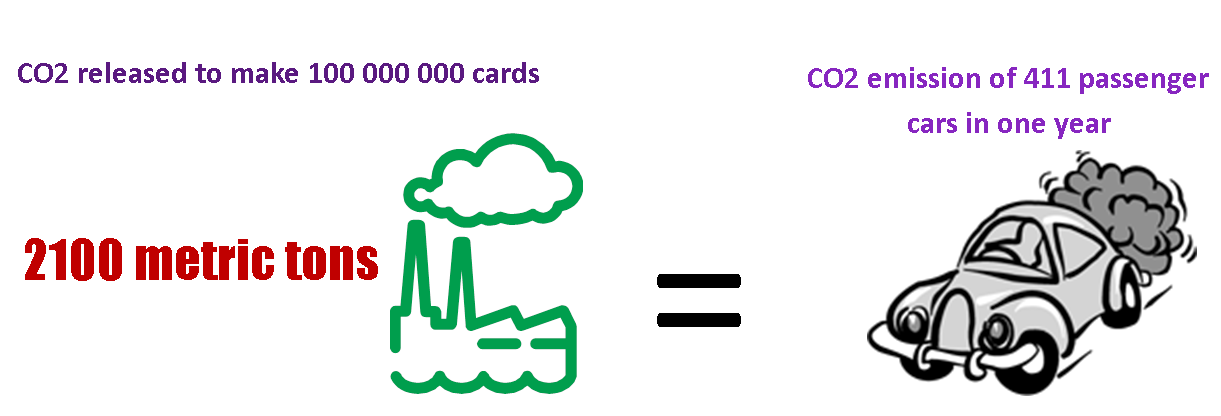We all have them, those colourful, shiny plastic gift cards. Have you ever wondered what it takes to make a gift card? I did, so I Googled it. Turns out, 5.07 grams of Polyvinyl Chloride (PVC – fancy name for plastic) is needed to make a plastic card. So I wondered, how much plastic is needed to manufacturing all these physical gift cards for the businesses? Google had the answer for that too. Check out what I found:
So, what does that mean? Let’s put a better context around the 2100 metric tons number. Here’s what I found:

That’s right, just the emission from manufacturing of plastic gift cards in one year is equal to having over 4000 cars on the road. I didn’t even include the additional emission from packaging, boxes, printing, and transportation from manufacturing sites to customers’ stores to your home. Those activities can easily double or triple the CO2 emission of having plastic gift cards – and this just in one year!
What if we adopted eGift cards? Then a lot of the above activities won’t be necessary. Creation and delivery are done digitally, redemption can be done on a mobile device via applications like Passbook, and there are no junk plastic cards to throw away when the gift card is used up. The environmental benefits of egift cards should not be overlooked by the retailers looking to increase its involvement in green initiatives.
Source and Methods:
100 000 000 cards per year:
$6 billion in gift cards sold to North American/ $60 average card value= 100 million cards in one year
1 plastic card contains 5.07gram of PVC, which generates 21grams of CO2
100 million cards * 21g CO2 = 2.1B grams CO2 = 21 metric tons
Gasoline CO2 emission = 8887 gram / gallon
Average mileage = 21 MPG
Average distance per year = 12,000 miles
Annual CO2 emission =8887 / 21 * 12,000 = 5.1 metric tons

